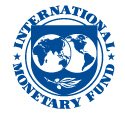Crisis Continues: Global Food Prices Still High After Year of War, Vulnerable Countries at Risk
Amidst the aftermath of Russia's invasion of Ukraine, the global food crisis lingers, with food prices remaining high despite a slight retreat from their record peaks in early 2022. As two major wheat exporters and other crucial crop-producing nations continue their second year of conflict, vulnerable countries face heightened food insecurity, especially fragile and conflict-affected states housing around 1 billion people. According to the Food and Agriculture Organization of the United Nations, food prices have experienced 11 consecutive monthly declines, bringing them down by 19% from their peak in March last year. However, inflation-adjusted prices in February are still above the average levels seen in recent years though they have returned to pre-war levels in Ukraine. Vegetable oils, dairy, and cereals have led the decline in prices, while sugar and meat remain relatively unchanged from early last year.
The International Monetary Fund (IMF) and other global institutions have issued a joint call for rapid action on food and nutrition security. They emphasize the need for governments and donors to provide stronger support to the most vulnerable populations, facilitate trade and market functioning, and eliminate harmful subsidies. Concerted efforts across these key areas are essential to prevent a prolonged crisis.





